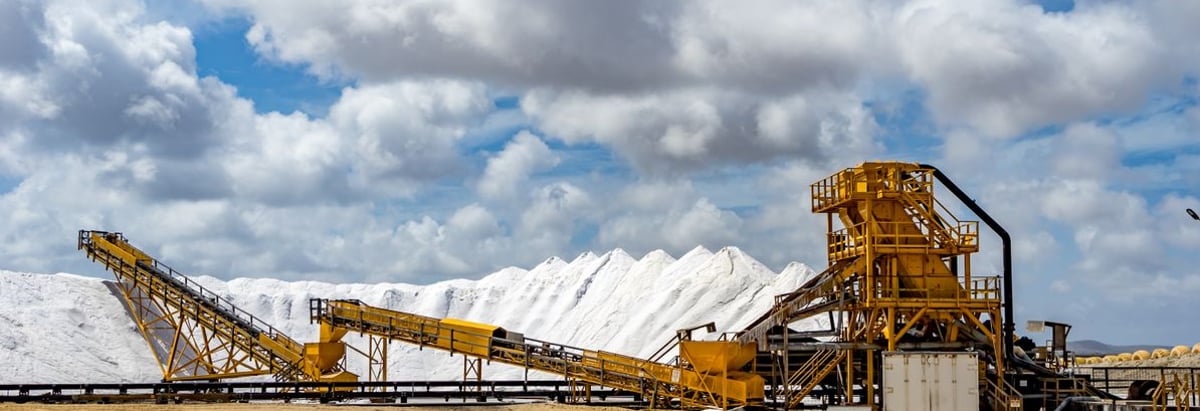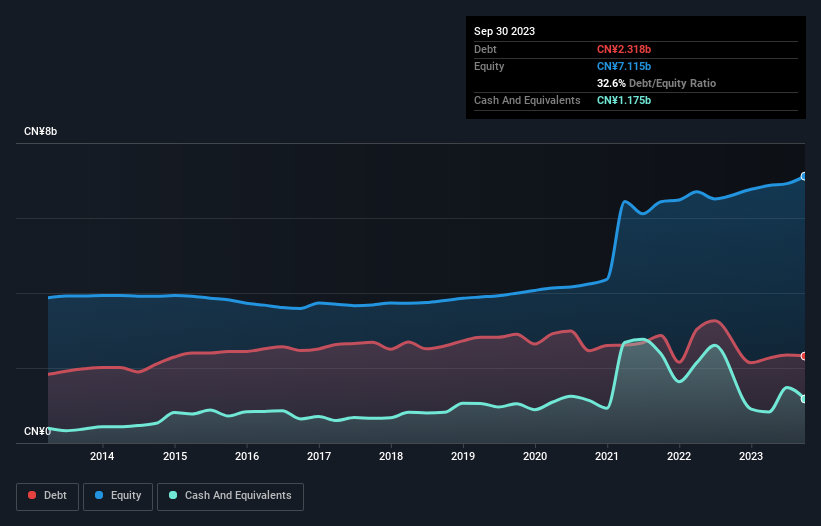- China
- /
- Metals and Mining
- /
- SHSE:600456
Baoji Titanium Industry (SHSE:600456) Has A Pretty Healthy Balance Sheet

Legendary fund manager Li Lu (who Charlie Munger backed) once said, 'The biggest investment risk is not the volatility of prices, but whether you will suffer a permanent loss of capital.' So it might be obvious that you need to consider debt, when you think about how risky any given stock is, because too much debt can sink a company. We note that Baoji Titanium Industry Co., Ltd. (SHSE:600456) does have debt on its balance sheet. But the more important question is: how much risk is that debt creating?
Why Does Debt Bring Risk?
Generally speaking, debt only becomes a real problem when a company can't easily pay it off, either by raising capital or with its own cash flow. Part and parcel of capitalism is the process of 'creative destruction' where failed businesses are mercilessly liquidated by their bankers. However, a more usual (but still expensive) situation is where a company must dilute shareholders at a cheap share price simply to get debt under control. Of course, plenty of companies use debt to fund growth, without any negative consequences. The first thing to do when considering how much debt a business uses is to look at its cash and debt together.
See our latest analysis for Baoji Titanium Industry
What Is Baoji Titanium Industry's Debt?
The image below, which you can click on for greater detail, shows that at September 2023 Baoji Titanium Industry had debt of CN¥2.32b, up from CN¥2.14b in one year. On the flip side, it has CN¥1.18b in cash leading to net debt of about CN¥1.14b.

How Strong Is Baoji Titanium Industry's Balance Sheet?
Zooming in on the latest balance sheet data, we can see that Baoji Titanium Industry had liabilities of CN¥3.83b due within 12 months and liabilities of CN¥2.36b due beyond that. Offsetting these obligations, it had cash of CN¥1.18b as well as receivables valued at CN¥4.65b due within 12 months. So it has liabilities totalling CN¥364.4m more than its cash and near-term receivables, combined.
Given Baoji Titanium Industry has a market capitalization of CN¥13.2b, it's hard to believe these liabilities pose much threat. But there are sufficient liabilities that we would certainly recommend shareholders continue to monitor the balance sheet, going forward.
In order to size up a company's debt relative to its earnings, we calculate its net debt divided by its earnings before interest, tax, depreciation, and amortization (EBITDA) and its earnings before interest and tax (EBIT) divided by its interest expense (its interest cover). The advantage of this approach is that we take into account both the absolute quantum of debt (with net debt to EBITDA) and the actual interest expenses associated with that debt (with its interest cover ratio).
Baoji Titanium Industry's net debt is only 1.1 times its EBITDA. And its EBIT covers its interest expense a whopping 12.7 times over. So you could argue it is no more threatened by its debt than an elephant is by a mouse. Fortunately, Baoji Titanium Industry grew its EBIT by 2.8% in the last year, making that debt load look even more manageable. There's no doubt that we learn most about debt from the balance sheet. But it is future earnings, more than anything, that will determine Baoji Titanium Industry's ability to maintain a healthy balance sheet going forward. So if you're focused on the future you can check out this free report showing analyst profit forecasts.
But our final consideration is also important, because a company cannot pay debt with paper profits; it needs cold hard cash. So it's worth checking how much of that EBIT is backed by free cash flow. Considering the last three years, Baoji Titanium Industry actually recorded a cash outflow, overall. Debt is far more risky for companies with unreliable free cash flow, so shareholders should be hoping that the past expenditure will produce free cash flow in the future.
Our View
When it comes to the balance sheet, the standout positive for Baoji Titanium Industry was the fact that it seems able to cover its interest expense with its EBIT confidently. But the other factors we noted above weren't so encouraging. In particular, conversion of EBIT to free cash flow gives us cold feet. Looking at all this data makes us feel a little cautious about Baoji Titanium Industry's debt levels. While we appreciate debt can enhance returns on equity, we'd suggest that shareholders keep close watch on its debt levels, lest they increase. There's no doubt that we learn most about debt from the balance sheet. But ultimately, every company can contain risks that exist outside of the balance sheet. To that end, you should be aware of the 1 warning sign we've spotted with Baoji Titanium Industry .
At the end of the day, it's often better to focus on companies that are free from net debt. You can access our special list of such companies (all with a track record of profit growth). It's free.
Valuation is complex, but we're here to simplify it.
Discover if Baoji Titanium Industry might be undervalued or overvalued with our detailed analysis, featuring fair value estimates, potential risks, dividends, insider trades, and its financial condition.
Access Free AnalysisHave feedback on this article? Concerned about the content? Get in touch with us directly. Alternatively, email editorial-team (at) simplywallst.com.
This article by Simply Wall St is general in nature. We provide commentary based on historical data and analyst forecasts only using an unbiased methodology and our articles are not intended to be financial advice. It does not constitute a recommendation to buy or sell any stock, and does not take account of your objectives, or your financial situation. We aim to bring you long-term focused analysis driven by fundamental data. Note that our analysis may not factor in the latest price-sensitive company announcements or qualitative material. Simply Wall St has no position in any stocks mentioned.
About SHSE:600456
Baoji Titanium Industry
Manufactures and sells titanium and titanium alloy products.
Excellent balance sheet second-rate dividend payer.
Market Insights
Community Narratives




